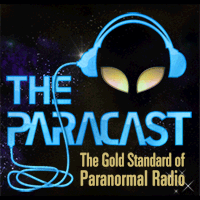Burnt State
Paranormal Adept
i agree that the rock is a rock, and so too is a light in the sky. even if the light in the sky does really interesting and unusual things, it's still just a light in the sky. where consciousness appears to play a role in the experience of the UAP or UFO, whatever cup of tea you drink from, is that the closer the UAP is to the observer the more that the information that is coming through appears to be quite fuzzy, even distorted or hallucinatory. we simply can not accept or rely on exactly what it is that the witness says. in fact as recently seen at the CAIPAN conference one workshop series theme focussed on the necessity of creating a better approach to recording witness data to make it scientifically useful using such things as a common taxonomy of descriptions for the UAP witness along with more cognitive interview techniques. there is a problem of trying to get an actual accurate estimation of exactly what was seen. problems of language, time lag between reporting events, degrees of excitement, fear and stress play roles, as does whatever that stimulus was and its proximity to the witness.
a simple way to think about the role of consciousness in reports from different witnesses is looking at how the nature of the objects change and reflect cultural norms, science fiction media of the era as well as the technological constructions of the time - all play roles in creating different "skins" as it were for the UAP to present itself in, or perhaps more accurate is to say how they are perceived. is it an airship? is it a honeycombed collection of spider webs? is it a triangle with a glowing orb in the centre? is it a football field sized mothership? is it a flying saucer? in this way the information of the UAP is obviously shifting or, the final witnessed statement and perception appears to be more of a co-creation between the observer and stimulus, and this is especially evident the closer the person is to the object. even more curious is when multiple people are looking at the same object but are seeing different things or in some cases some people might be seeing nothing at all. so then a rock is not simply a rock, when the UAP is very close and appears to be dramatically affecting the way we perceive. the way's and how's of it all may also be much more tied to who the witness is - their own previous experiences, the things that led up to this particular sighting, previous perceptions of the content of the stimulus they believe to be seeing - all of this is now becoming a part of the vision or visual experience.
why is it that these objects at a distance appear to have not that much of a startling or long lasting effect on the observer, whereas the closer the object the more profound the experience and more long-lasting and even life-altering the event may prove to be. when it is up close and personal the UAP appears to be more interactive than just looking at a rock.
a simple way to think about the role of consciousness in reports from different witnesses is looking at how the nature of the objects change and reflect cultural norms, science fiction media of the era as well as the technological constructions of the time - all play roles in creating different "skins" as it were for the UAP to present itself in, or perhaps more accurate is to say how they are perceived. is it an airship? is it a honeycombed collection of spider webs? is it a triangle with a glowing orb in the centre? is it a football field sized mothership? is it a flying saucer? in this way the information of the UAP is obviously shifting or, the final witnessed statement and perception appears to be more of a co-creation between the observer and stimulus, and this is especially evident the closer the person is to the object. even more curious is when multiple people are looking at the same object but are seeing different things or in some cases some people might be seeing nothing at all. so then a rock is not simply a rock, when the UAP is very close and appears to be dramatically affecting the way we perceive. the way's and how's of it all may also be much more tied to who the witness is - their own previous experiences, the things that led up to this particular sighting, previous perceptions of the content of the stimulus they believe to be seeing - all of this is now becoming a part of the vision or visual experience.
why is it that these objects at a distance appear to have not that much of a startling or long lasting effect on the observer, whereas the closer the object the more profound the experience and more long-lasting and even life-altering the event may prove to be. when it is up close and personal the UAP appears to be more interactive than just looking at a rock.

